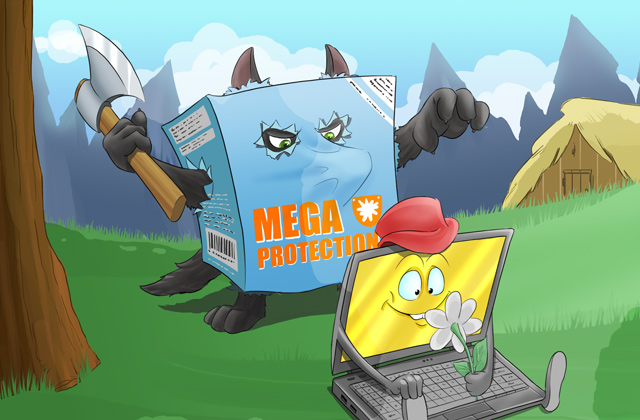Cybercriminals are constantly looking for new ways to manipulate victims online. One of your strongest lines of defense against having your personal data and your money fall into the hands of a cybercriminal is to remain aware and vigilant. With that being said, a current method of attack you need to know about is fake antivirus. They pose as real products on websites and can often times appear to look completely authentic, but you need to think twice before you even consider clicking on one.
Have you ever been browsing the Internet when a pop-up message or banner appeared, advertising antivirus software to you? It’s often designed to look like the result of “antivirus scanning”, which typically reveals about a dozen viruses on your system. The message was probably flashy and encouraged you to act, but you should never take any action on any of these messages! Fake or rogue antivirus can cause a lot of harm to your computer. They are designed to look legitimate and often times encourage victims to remove viruses from their system, perform updates, or install new software. They can be advertised to you as banner ads, pop-ups or email links, and can even appear in results streams for people who have searched for an antivirus product. When acted on, they’re meant to encourage you to pay up to $80 for “protection”, infect your computer with malicious software, steal personal information, including credit card numbers or corrupt files on your computer. Android users have to be cautious too, because fake antiviruses exist on Android platform for three years.
If they’re so misleading and authentic looking, how can you protect yourself against them?
Do Your Research
Never install any program or software without researching the reputability of the company selling it first. Just because a company appears trustworthy in their advertisements doesn’t mean they are. Blindly clicking on a link or banner ad could lead you to a malicious site or allow malware to be downloaded onto your computer via a botnet you might not even know about. The more you know the safer you are, so never hesitate to perform a quick search before taking any action.
Use Your Security Settings
After you’ve researched and installed a trusted antivirus on your OS, take advantage of the security settings that are offered to you on it.
- Enable firewall to ensure you are secure on local networks and the Internet. Our newest product, Kaspersky Internet Security 2014, offers a two-way firewall, monitoring both incoming and outgoing traffic, providing you with an extra blanket of security.
- Configure your settings to allow your AV to automatically perform system updates. Updates are released to improve upon past errors or to provide users with enhanced features. Configuring this setting will allow the AV to perform searches for new application versions in the background, keeping your system up to date while giving you peace of mind.
- Take advantage of controls like anti-phishing, anti-spam and anti-banner to keep fake AVs from getting to you in the first place. Also remember you have the option to set up exclusion rules to allow easy navigating for pre-determined trusted sites and sources.
- Remember, you don’t need two antiviruses. If you have one, don’t install another, especially when it comes from unknown brand.
Look Out For Signs
Even if you’re using a reliable antivirus, you should make sure you’re doing your part to keep yourself safe as well. The easiest and most obvious step to take is to make yourself familiar with your chosen AV software. You should know what alerts and messages look like so that you can recognize any unfamiliar, fake ones that may appear while online. Two common warning signs of a fake message would be the lack of a company logo or a request for credit card information. If you’re already using a notable AV, you will never be asked to enter credit card information to perform updates or take basic actions. Reading up on the software before installation could save you some trouble down the line.
Looks credible and well-designes. Still it’s 100% fake
Be Mindful
As mentioned earlier, it’s important for you to keep yourself aware of the latest scams that are out there. We’re always doing our best to keep you up to date with the latest attacks and offer tips to shield yourself from them. Your security is our priority, but it should be yours too!
If you think your system has been infected by a fake AV, and you don’t already have the proper software installed to protect yourself, you can use our free virus scan and removal tool to combat the issue. With the right systems in place and a general awareness of the threats that exist online, you can feel more guarded against an attack.
 Antivirus
Antivirus



 Tips
Tips